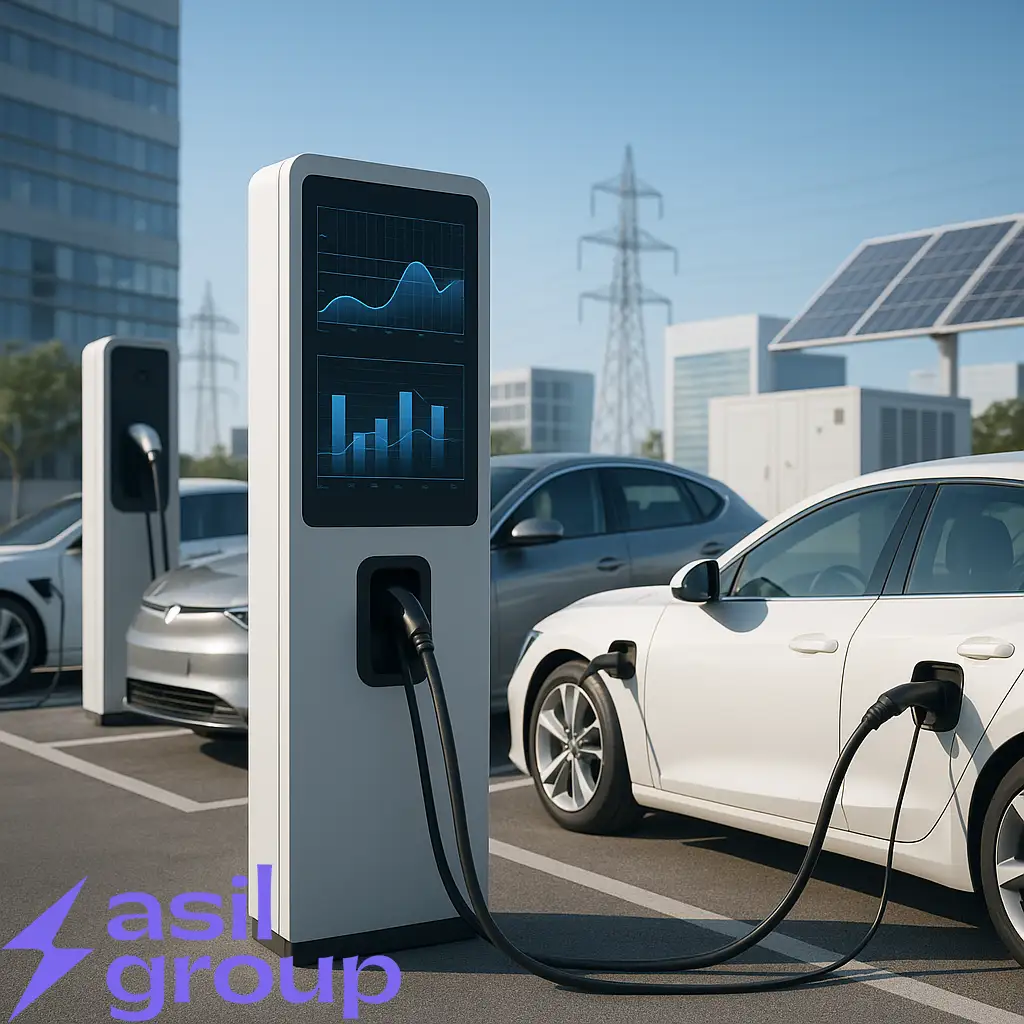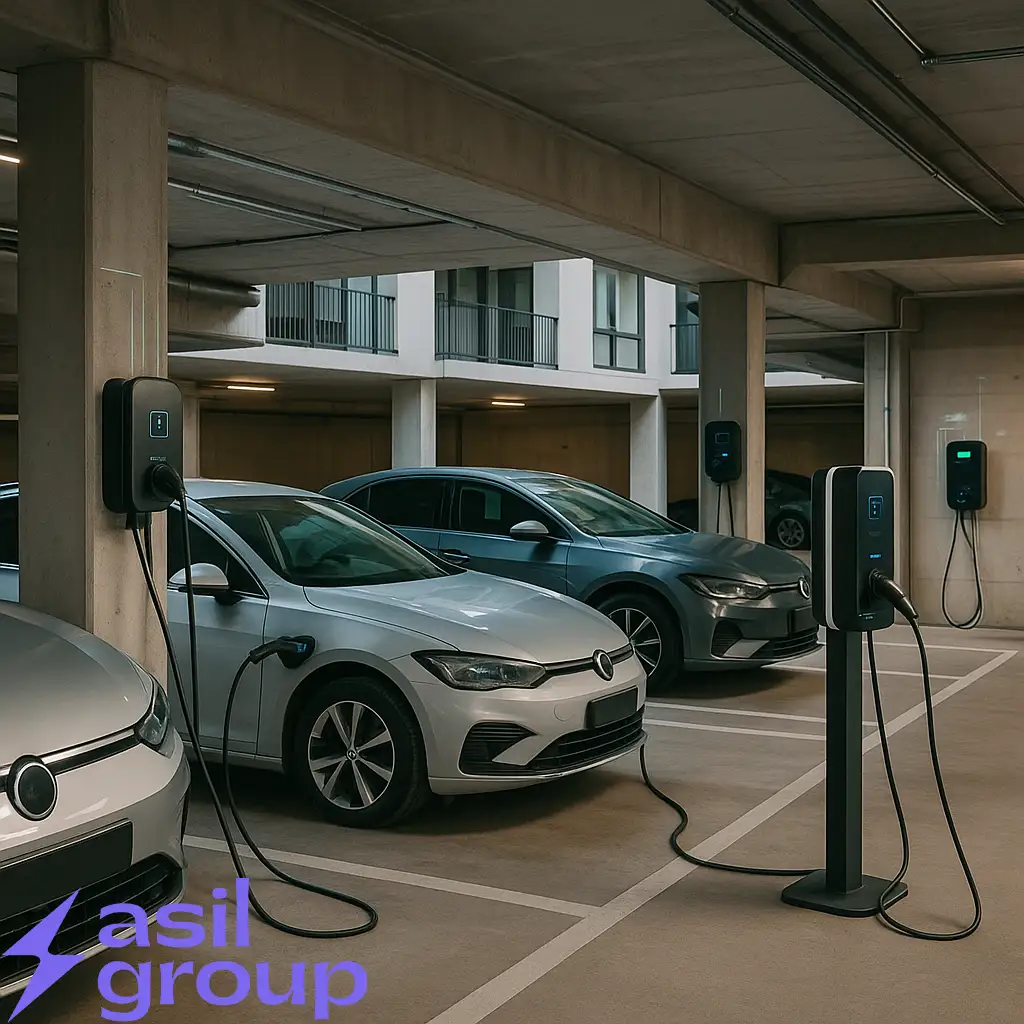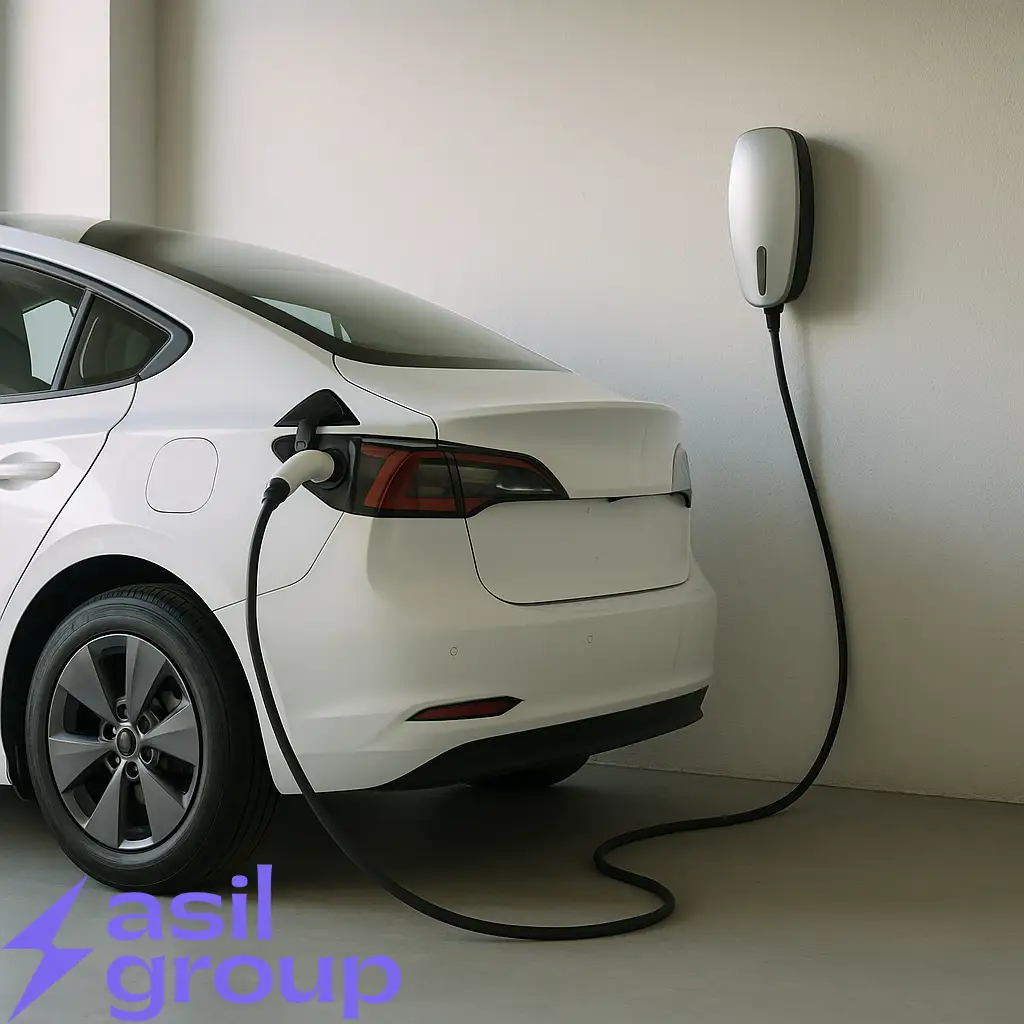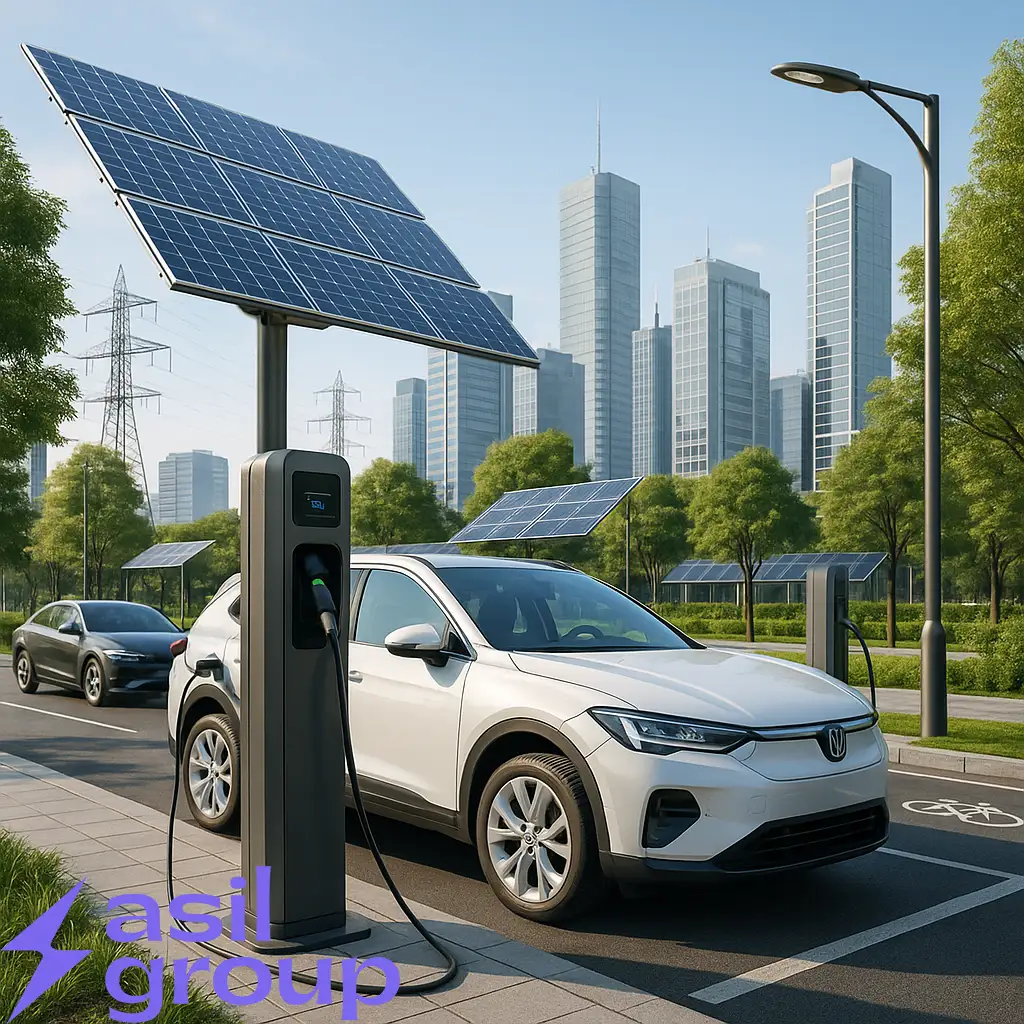
Smart Load Management in EV Charging Networks
Back to all posts As electric vehicle (EV) adoption accelerates globally,

As electric vehicles (EVs) become more common, the need for accessible and practical charging solutions is growing. While homeowners with private garages can easily install home chargers, residents of apartment buildings and multi-unit housing face several challenges. Installing EV chargers in apartments is not as straightforward, but it is increasingly necessary. In this article, we provide practical, scalable, and affordable solutions for installing EV chargers in shared residential spaces, with a focus on long-term usability and value.
Electric mobility is becoming a key part of modern, sustainable urban living. Yet in many cities, a significant portion of the population lives in apartments where EV infrastructure is limited or nonexistent. Solving this gap is crucial to enable broader EV adoption.
Installing EV chargers in apartment buildings:
Makes EV ownership practical for more people
Reduces dependency on public EV charging stations
Increases property value for developers and landlords
Encourages sustainable transportation in urban areas
Charging EVs in multi-unit buildings presents unique obstacles, including:
Shared Parking Spaces: Many apartment buildings have common or non-designated parking, making it harder to assign charging spots.
Limited Electrical Capacity: Older buildings may not have the infrastructure to support multiple Level 2 chargers without upgrades.
Lack of Wiring Infrastructure: Most apartments were not built with EV readiness in mind, so installing new cabling can be complex.
Approval and Permissions: Residents often need permission from homeowners’ associations (HOAs) or building management before installation.
Billing and Access Control: In shared systems, it’s essential to track energy use fairly and enable secure access to chargers.
When apartments have designated parking spots, residents can install individual chargers connected either to their personal electricity meter or to a sub-metered system approved by the building.
This is suitable for:
Small or mid-size complexes with assigned spaces
Buildings where infrastructure upgrades are possible
Installing shared chargers in common parking areas allows multiple residents to use a centralized system. These are typically equipped with smart features to manage access, track usage, and handle billing automatically.
This is ideal for:
High-density buildings with shared parking
HOAs or property managers looking for an inclusive solution
Smart charging software can ensure fair access and prioritize usage based on demand.
Load balancing systems help distribute available power across multiple chargers, preventing overloads and reducing the need for major electrical upgrades.
This solution:
Enables more chargers on limited capacity
Reduces electricity demand during peak hours
Ensures safe and efficient power usage
Many systems can dynamically adjust power to individual chargers based on real-time demand.
For buildings with budget or management limitations, CaaS providers handle the full charging setup. They install and manage chargers, and residents pay for usage while the building shares in revenue or leases the system.
Best suited for:
Developers and building managers wanting low-risk implementation
Older buildings with complex upgrade requirements
This model removes upfront costs while delivering a fully managed solution.
Market appeal: EV-friendly buildings attract high-value tenants and homeowners
Increased property value: Charging infrastructure can be a selling point for new developments
Future compliance: Many cities are introducing regulations that require EV readiness in new buildings
Green certifications: Projects with EV charging may qualify for sustainability credits (e.g. LEED, BREEAM)
For anyone planning to install EV chargers in an apartment building, consider the following:
Conduct a load study to assess electrical capacity
Plan for future growth (install conduit for additional chargers later)
Use certified electricians familiar with EV infrastructure
Ensure the solution complies with local building codes and fire safety standards
Communicate with residents early to understand interest and demand
Asil Group provides tailored solutions for multi-unit EV charging, including:
Site evaluation and infrastructure planning
Load balancing and smart energy systems
Centralized billing and access control software
Long-term support and system maintenance
We work with property developers, HOAs, and residents to deliver reliable and future-ready EV charging for every type of residential building.
EV ownership should not be limited by where you live. With the right approach, even older apartment buildings and shared residential spaces can support reliable, scalable, and affordable electric vehicle charging. Whether you’re a resident, a building manager, or a real estate developer, installing EV chargers in apartments is an investment in long-term sustainability, convenience, and property value.
As EV adoption continues to grow, the question is no longer whether to install chargers — it’s how soon you can make your building EV-ready.

Back to all posts As electric vehicle (EV) adoption accelerates globally,

Back to all posts As electric vehicles (EVs) become more popular,

Back to all posts The rise of electric vehicles (EVs) is

Back to all posts As electric vehicle (EV) adoption accelerates globally,

Back to all posts As electric vehicles (EVs) become more popular,
Asil Group offers cost-effective and eco-friendly EV transportation solutions. We focus on convenience with AC chargers, DC fast chargers, and Wallbox chargers, serving premium locations and enhancing quality of life with smart, sustainable EV charging.
Asil Group offers cost-effective and eco-friendly EV transportation solutions. We focus on convenience with AC chargers, DC fast chargers, and Wallbox chargers, serving premium locations and enhancing quality of life with smart, sustainable EV charging.
Asil Group offers cost-effective and eco-friendly EV transportation solutions. We focus on convenience with AC chargers, DC fast chargers, and Wallbox chargers, serving premium locations and enhancing quality of life with smart, sustainable EV charging.
Phone: +98 21 22221422
Email: [email protected]